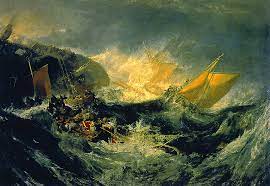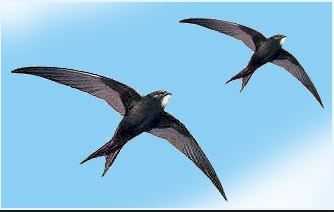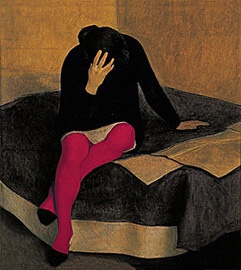Browse By Unit
Unit 4 Overview: La literatura romántica, realista y naturalista
6 min read•june 18, 2024
Sylvia Rodriguez
Sylvia Rodriguez
Welcome to Unit 4: La literatura romántica, realista y naturalista ✨
Unit 4 of AP Spanish Literature focuses on the Romantic, Realist, and Naturalist literary movements of the 19th century. This period was marked by a shift away from the idealized world of Romanticism and towards a more realistic depiction of life and society.
Everything else in this course has led us to this time period; it's great we're officially on La literatura romántica, realista, y naturalista. There are three literature pieces that are required for this unit, two of which are poems. This is the second shortest section but is super important to stay focused on it as it is 66% poetry.
Unit 4 Overview: Romanticism, Realism, Naturalism
Literary Movements
- Romanticism: A literary movement that emphasized emotions, imagination, and nature. Famous authors include José María Heredia and Gustavo Adolfo Bécquer.
- Realism: A literary movement that focused on the realistic depiction of everyday life and society. Famous authors include Emilia Pardo Bazán and Benito Pérez Galdós.
- Naturalism: A literary movement that emphasized the role of environment and heredity in shaping human behavior. Famous authors include Vicente Blasco Ibáñez and Emilia Pardo Bazán.
In addition to the literary movements discussed above, there are also several literary techniques that are commonly used in Romantic, Realist, and Naturalist literature.
Literary Techniques
Imagery is a technique that involves using vivid and descriptive language to create a powerful image in the reader's mind. This can be used to create a sensory experience for the reader and to help them better understand and connect with the characters and settings in the story. In Romantic literature, imagery is often used to depict the beauty and power of nature, while in Realist literature, imagery is often used to create a realistic and detailed portrayal of everyday life.
Symbolism is another technique that involves using objects, ideas, or characters to represent something else. This can be used to convey deeper meanings and themes in the story and to help the reader better understand the author's intentions. In Romantic literature, symbolism is often used to represent ideas such as love, freedom, and nature, while in Realist and Naturalist literature, symbolism is often used to represent social issues and political realities.
Irony is a technique that involves using language in a way that is opposite to its literal meaning, often to create humor or to criticize social issues. Irony can be used to expose contradictions and hypocrisies in society and to challenge readers to think critically about the world around them. In Realist and Naturalist literature, irony is often used to critique the social and political realities of the time, while in Romantic literature, irony is often used to create a sense of tension and uncertainty.
Unit 4 Required Texts
Below are summaries of all required texts for this unit in AP Spanish Literature! Be sure to click each heading to be sent to that respective guide and learn more about these pieces of literature.
4.1 "En una tempestad" – José María Heredia
“José Mara Heredia, a poet from Cuba and early 19th-century liberation fighter, wrote the poem "En una tempestad" in 1825. The poem captures the chaotic historical environment of the era, which was characterized by Latin American liberation movements against Spanish colonial power. The Romantic movement and Heredia's personal experiences with political turmoil greatly affected his art, which he communicated through vivid imagery and intense emotion.
- El tiempo y el espacio: "En una tempestad" depicts the overwhelming strength and devastation of a storm, highlighting both the unrelenting passage of time and the immensity of the natural world.
- La naturaleza y el ambiente: The poem beautifully captures the ferocious beauty of the storm, underlining the imposing nature and its power to shape and influence the surroundings.
- El individuo en su entorno: In the turmoil of the tempest, the poem considers the insignificance of the individual in the face of powerful natural forces, provoking thoughts on human frailty and mortality.
- La trayectoria y la transformación: "En una tempestad" follows the storm's development from its beginning to its final dissipation, acting as a metaphor for life's passing and the possibility of change and regrowth.

Image Courtesy of Word Press
4.2 Rima LIII, “Volverán las oscuras golondrinas” – Gustavo Adolfo Bécquer
Rima LIII ("Volverán las oscuras golondrinas") was written by 19th-century Spanish poet Gustavo Adolfo Bécquer and was first published in 1871. Bécquer was a member of Spanish Romanticism, a late Romantic movement that centered on themes of love, longing, and sadness. Bécquer depicts the passing of time and a sense of lost love in Rima LIII. The demise of Romanticism and the rise of Realism as the preeminent literary movement in Spain are among the social and political changes that define the historical context of the poem. The gloomy lines of Bécquer perfectly represent the mood of Spanish literature's transitional time.
- El tiempo y el espacio: The return of the dark swallows serves as a symbol for the recurrent seasons and the fleeting nature of love. In other words, the poem reflects on the passage of time and the cyclical nature of life.
- Las relaciones interpersonales: The poem uses aspects of nature, such as the swallows and the scenery, to evoke a melancholy mood. This helps echo the protagonist's feelings and provides the backdrop for the story of a lost love.
- La naturaleza y el ambiente: The poem delves into the complexities of interpersonal relationships as well as the grief of love lost as it addresses the themes of love, longing, and separation.
- El amor y el desprecio: The speaker expresses both a desire for the return of love and a sense of bitterness for the one who has given them heartbreak in the poem, which contrasts feelings of love with disdain.

Image Courtesy of Menudos Peques
4.3 “Las medias rojas” – Emilia Pardo Bazán
The short story "Las medias rojas" was written by Spanish author, feminist, and literary critic Emilia Pardo Bazán. It was initially released in 1914. Known for her realistic and naturalistic writing style, Pardo Bazán was a significant player in the Spanish literary landscape of the late 19th and early 20th centuries. With a focus on topics of poverty, gender inequality, and societal limitations, "Las medias rojas" examines the challenges of rural working-class women in Galicia, Spain. The narrative illuminates the tough social dynamics of the early 20th century when feminism was gaining ground and upending established gender norms, as well as the terrible reality that women had to deal with.
- La construcción del género: "Las medias rojas" examines the restrictive limits placed on women in the rural life of the early 20th century as well as the gendered construction of societal expectations.
- Las divisiones socioeconómicas: The novel explores the socioeconomic divisions and disparities that exist in Galician society, emphasizing the struggles that working-class individuals confront and the limited options that are open to them.
- La construcción de la realidad: "Las medias rojas" critically portrays the social structures that confine and shape the lives of the protagonists and reveals the hard realities of living in rural Galicia, ultimately contradicting the idea of a romanticized rural existence.

Image courtesy of Think Ink
Navigating this Unit
This unit doesn’t have many required texts but because two of the three pieces that are required are poems, you will want to be familiar with what each poem is composed of and will want to be careful to not mix up the authors!
Good luck with studying and continuing to explore the different variations of literature pieces while identifying patterns amongst them 😊
<< Hide Menu
Unit 4 Overview: La literatura romántica, realista y naturalista
6 min read•june 18, 2024
Sylvia Rodriguez
Sylvia Rodriguez
Welcome to Unit 4: La literatura romántica, realista y naturalista ✨
Unit 4 of AP Spanish Literature focuses on the Romantic, Realist, and Naturalist literary movements of the 19th century. This period was marked by a shift away from the idealized world of Romanticism and towards a more realistic depiction of life and society.
Everything else in this course has led us to this time period; it's great we're officially on La literatura romántica, realista, y naturalista. There are three literature pieces that are required for this unit, two of which are poems. This is the second shortest section but is super important to stay focused on it as it is 66% poetry.
Unit 4 Overview: Romanticism, Realism, Naturalism
Literary Movements
- Romanticism: A literary movement that emphasized emotions, imagination, and nature. Famous authors include José María Heredia and Gustavo Adolfo Bécquer.
- Realism: A literary movement that focused on the realistic depiction of everyday life and society. Famous authors include Emilia Pardo Bazán and Benito Pérez Galdós.
- Naturalism: A literary movement that emphasized the role of environment and heredity in shaping human behavior. Famous authors include Vicente Blasco Ibáñez and Emilia Pardo Bazán.
In addition to the literary movements discussed above, there are also several literary techniques that are commonly used in Romantic, Realist, and Naturalist literature.
Literary Techniques
Imagery is a technique that involves using vivid and descriptive language to create a powerful image in the reader's mind. This can be used to create a sensory experience for the reader and to help them better understand and connect with the characters and settings in the story. In Romantic literature, imagery is often used to depict the beauty and power of nature, while in Realist literature, imagery is often used to create a realistic and detailed portrayal of everyday life.
Symbolism is another technique that involves using objects, ideas, or characters to represent something else. This can be used to convey deeper meanings and themes in the story and to help the reader better understand the author's intentions. In Romantic literature, symbolism is often used to represent ideas such as love, freedom, and nature, while in Realist and Naturalist literature, symbolism is often used to represent social issues and political realities.
Irony is a technique that involves using language in a way that is opposite to its literal meaning, often to create humor or to criticize social issues. Irony can be used to expose contradictions and hypocrisies in society and to challenge readers to think critically about the world around them. In Realist and Naturalist literature, irony is often used to critique the social and political realities of the time, while in Romantic literature, irony is often used to create a sense of tension and uncertainty.
Unit 4 Required Texts
Below are summaries of all required texts for this unit in AP Spanish Literature! Be sure to click each heading to be sent to that respective guide and learn more about these pieces of literature.
4.1 "En una tempestad" – José María Heredia
“José Mara Heredia, a poet from Cuba and early 19th-century liberation fighter, wrote the poem "En una tempestad" in 1825. The poem captures the chaotic historical environment of the era, which was characterized by Latin American liberation movements against Spanish colonial power. The Romantic movement and Heredia's personal experiences with political turmoil greatly affected his art, which he communicated through vivid imagery and intense emotion.
- El tiempo y el espacio: "En una tempestad" depicts the overwhelming strength and devastation of a storm, highlighting both the unrelenting passage of time and the immensity of the natural world.
- La naturaleza y el ambiente: The poem beautifully captures the ferocious beauty of the storm, underlining the imposing nature and its power to shape and influence the surroundings.
- El individuo en su entorno: In the turmoil of the tempest, the poem considers the insignificance of the individual in the face of powerful natural forces, provoking thoughts on human frailty and mortality.
- La trayectoria y la transformación: "En una tempestad" follows the storm's development from its beginning to its final dissipation, acting as a metaphor for life's passing and the possibility of change and regrowth.

Image Courtesy of Word Press
4.2 Rima LIII, “Volverán las oscuras golondrinas” – Gustavo Adolfo Bécquer
Rima LIII ("Volverán las oscuras golondrinas") was written by 19th-century Spanish poet Gustavo Adolfo Bécquer and was first published in 1871. Bécquer was a member of Spanish Romanticism, a late Romantic movement that centered on themes of love, longing, and sadness. Bécquer depicts the passing of time and a sense of lost love in Rima LIII. The demise of Romanticism and the rise of Realism as the preeminent literary movement in Spain are among the social and political changes that define the historical context of the poem. The gloomy lines of Bécquer perfectly represent the mood of Spanish literature's transitional time.
- El tiempo y el espacio: The return of the dark swallows serves as a symbol for the recurrent seasons and the fleeting nature of love. In other words, the poem reflects on the passage of time and the cyclical nature of life.
- Las relaciones interpersonales: The poem uses aspects of nature, such as the swallows and the scenery, to evoke a melancholy mood. This helps echo the protagonist's feelings and provides the backdrop for the story of a lost love.
- La naturaleza y el ambiente: The poem delves into the complexities of interpersonal relationships as well as the grief of love lost as it addresses the themes of love, longing, and separation.
- El amor y el desprecio: The speaker expresses both a desire for the return of love and a sense of bitterness for the one who has given them heartbreak in the poem, which contrasts feelings of love with disdain.

Image Courtesy of Menudos Peques
4.3 “Las medias rojas” – Emilia Pardo Bazán
The short story "Las medias rojas" was written by Spanish author, feminist, and literary critic Emilia Pardo Bazán. It was initially released in 1914. Known for her realistic and naturalistic writing style, Pardo Bazán was a significant player in the Spanish literary landscape of the late 19th and early 20th centuries. With a focus on topics of poverty, gender inequality, and societal limitations, "Las medias rojas" examines the challenges of rural working-class women in Galicia, Spain. The narrative illuminates the tough social dynamics of the early 20th century when feminism was gaining ground and upending established gender norms, as well as the terrible reality that women had to deal with.
- La construcción del género: "Las medias rojas" examines the restrictive limits placed on women in the rural life of the early 20th century as well as the gendered construction of societal expectations.
- Las divisiones socioeconómicas: The novel explores the socioeconomic divisions and disparities that exist in Galician society, emphasizing the struggles that working-class individuals confront and the limited options that are open to them.
- La construcción de la realidad: "Las medias rojas" critically portrays the social structures that confine and shape the lives of the protagonists and reveals the hard realities of living in rural Galicia, ultimately contradicting the idea of a romanticized rural existence.

Image courtesy of Think Ink
Navigating this Unit
This unit doesn’t have many required texts but because two of the three pieces that are required are poems, you will want to be familiar with what each poem is composed of and will want to be careful to not mix up the authors!
Good luck with studying and continuing to explore the different variations of literature pieces while identifying patterns amongst them 😊

© 2025 Fiveable Inc. All rights reserved.